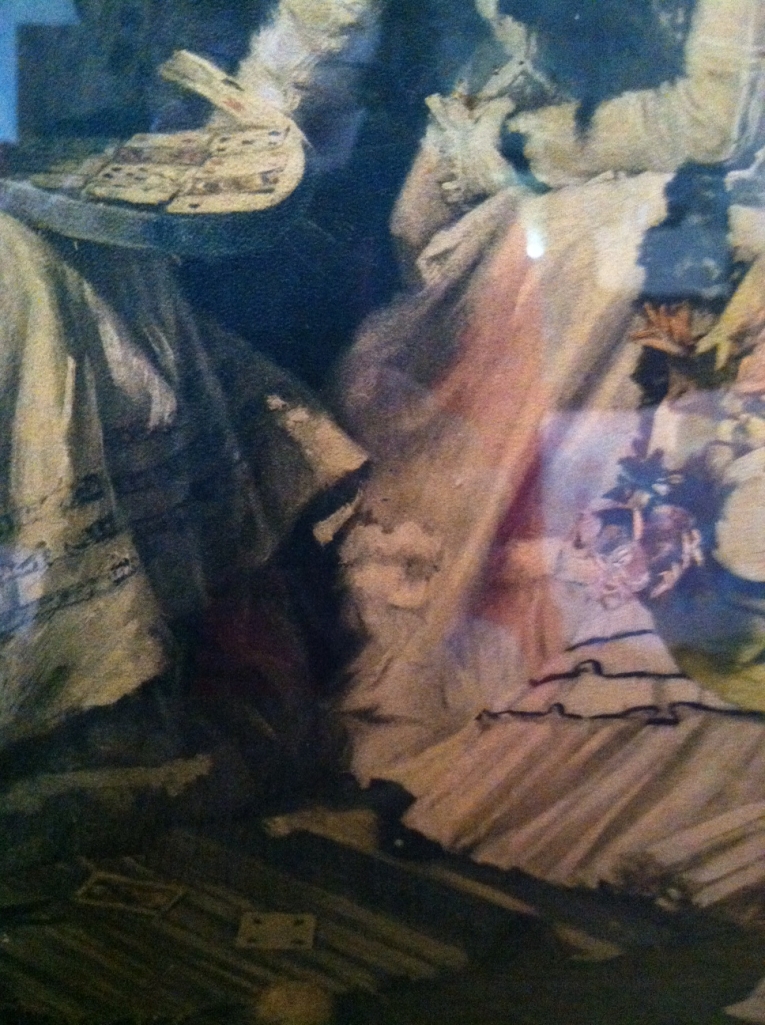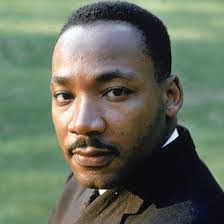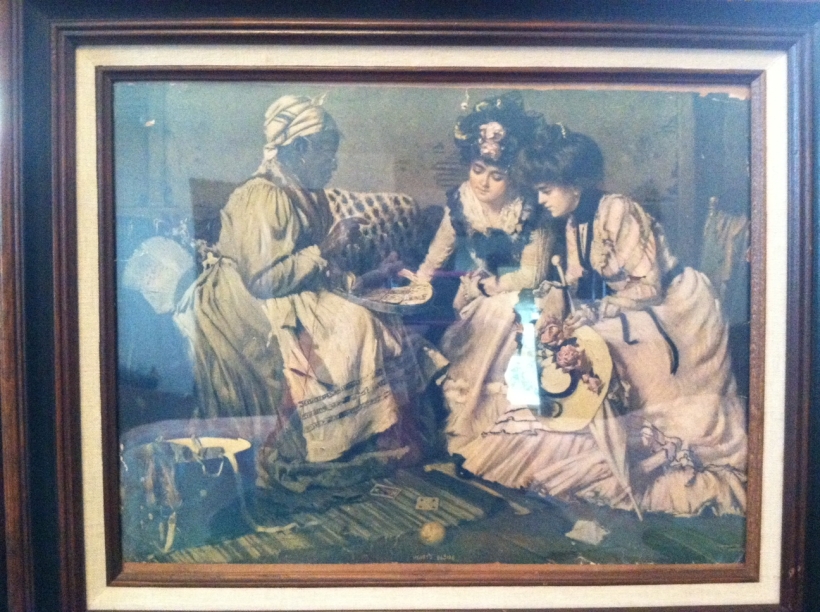This week we celebrate Martin Luther King Day, a tribute to the man with a vision for racial equality in the twentieth century and beyond. Just so, this post pays tribute to his dream and his legacy through a Mennonite lens.
“Jesus Loves the Little Children, All the Children of the World, Red, Brown, Yellow, Black and White,They are Precious in His Sight, Jesus Loves the Little Children of the World.”
As a tiny tot I was taught this song in Sunday School at Bossler’s Mennonite Church in the 1950s though the entire congregation was white. I saw children with slanted eyes and yellowish skin in picture books and a few black people in Lancaster and Harrisburg or maybe on the PRR train on our way to Philadelphia. But there were no children of a different skin color at Rheems Elementary School. Or even at Elizabethtown High School. Not a one!
It was ancestry, not skin color, that made a difference in my family. Grandma Longenecker, benign soul though she was, did make disparaging remarks about other ethnic groups. She called a woman she was slightly acquainted with in Bainbridge “The Hunky Lady.” From her tone, I think Grandma Fannie was referring to the woman’s origins in Hungary, and therefore different from us, the Pennsylvania Dutch. And she made no bones about her view of Irish housekeeping. If we made a mess playing in her big kitchen, she’d remark, “It looks Irish in here,” and we’d be tidying up behind her broom. Fast!
In a recent visit to the attic, I came upon a pair of bookends featuring two pop-eyed black faces, a boy and a girl, painted in grade school. Were such children curiosities to us? Novelties? Why would my teacher approve of such an art project? Along with stories like Little Black Sambo, they were obviously part of the folklore of another era, not at all politically correct by today’s standards.
My first encounter with a black person, up close and personal, was with little Chico Duncan, a black boy from New York City, who came to our home for a week in the “Fresh Air” program in which volunteer families would give city children summer vacations in the country. (Shirley Showalter’s book Blush devotes an entire chapter to her friendship with their family’s Fresh Air girl.) The most fascinating thing about Chico was his hair, kinky black and glistening. Was his hair naturally oily or did he put on something from a bottle? I longed to touch it and feel the texture, but fear or embarrassment or both restrained me from even asking. Besides, he was a BOY, and I had hoped for a girl to play with!
But that was years ago. Now at Bossler’s Church, children who sing “Jesus Loves the Little Children” may actually be sitting besides a child with a darker skin tone. The church treasurer, a former missionary, has an Ethiopian husband; one farm family has adopted African-American twin babies. There is a couple of Middle-Eastern descent. The Bishop, Director of African Programming with Eastern Mennonite Missions, has biological grand-children of Kenyan-American ancestry.
And my Grandma Longenecker? For at least two decades through Lutheran Social Services, she and Aunt Ruthie sponsored families from all over the world—particularly Viet Nam, Africa, and eastern Europe. They, along with many other Lancaster County families, welcomed the immigrants and refugees from countries at war for weeks or months at a time until they could get a job, an apartment of their own, even acquire an education.
A few months ago, I re-visited Aunt Ruthie’s bedroom, (now unoccupied because she lives at Landis Homes) and saw on the wall as if for the first time, a framed picture of three women:
Two elegantly dressed Victorian women and a black woman, obviously a maid, playing cards. Is the maid holding the card tray for the other two? Is she teaching the ladies tricks of the trade? Are all three playing the game? Three would make a better game, don’t you think?

What experience with race did you encounter as a child? What story or anecdote can you add? I love when the bell chimes with your comment!



Another entertaining piece connecting you, your family and the world around you. Well written, Marian!
LikeLike
Thank you, Patti, for the acknowledgement. It’s all about connection, isn’t it? And I’m so happy to be connected to you, online that is. Stay warm, be well!
LikeLike
Marian — Like you, my parents never said a word about anyone based on skin color. My mother’s motto: “Skin color is a pigment of the imagination.”
I clearly remember the first time I encountered a person whose skin was a different color from my own. I was young enough to be held by my dad. Looking over his shoulder at the woman standing in line behind us at the store, I tentatively reached out my hand and shyly asked, “May I touch you’s face?” She replied with a smile, “Why, yes honey, you may.” And she stepped in a little closer so I could do just that.
LikeLike
You have a marvelous memory, Laurie–possibly even down to the dialogue! I love the words in your mom’s motto: Skin color is a pigment of the imagination. Both truthful and “punny.”
LikeLike
My growing up experiences were so similar to yours, Marian, the classic pale skin church, the summer visits from a fresh air child, the influx of refugees – A Chinese Vietnamese family who shared our home and filled it with their unusual cooking aromas – and precious memories of Little Black Sambo.
I had no animosity, nor even an awareness of skin color when reading and looking at pictures oft these beautiful dark eyed children. I thought their dark skin beautiful and their big dark eyes, memorizing. Different was more of an adventure than something to fear. My sister adopted Korean sisters and an African American child who were my kin from the very first day they arrived in our family. My best friend in college, and life long friend, was from Nigeria.
Growing up in a pale skin world was not a hindrance to me. I idolized the strength of character and passion of the dark skinned slaves depicted in movies. Somehow I understood their pain and heightened sensitivity; their desire to break out of their bondage, victimized by an insensitive culture.
Moving to the south brought with it quite a different experience. Working as the only white teller in an all black bank gave me a first hand experience of prejudice. I learned what it felt like to have someone chose another teller because of the color of my skin; and co-workers snub me for the same reason.
I love this blog post. It gets beneath our addiction to being politically correct – and invites us to really talk about what it’s been like to experience vast cultural and social change. Thank you.
LikeLike
We have so many parallel experiences, but I can’t relate to working in an environment as a minority, a great theme for a blog post. Thank you for reading and commenting. I hope we will visit each other’s blogs often, Dorothy.
LikeLike
This is a charming reflection on the the sometimes difficult to express reality of living life with cultural differences. Very well done Marian!
Growing up in the South, I have experienced both sides of the coin. My book focuses on micro-local politics and the personal history of those involved in it. In the first few pages you learn of Hannah’s belief that black people were black because they had been struck by lightening. This came from an experience she had with her black nanny. You also learn of her experiences with her few black classmates. It is all telling and is based on my own life experiences.
Only we, the people who are living life now and teaching our children, can change the world.
LikeLike
Thanks, SK. I value your comments because you have been engrossed with the topic of race specifically in the South for years now.
Readers: Susan’s blog contains a wealth of information about writing style, the intricacies of book publication and marketing as she is in the midst of it all. Her book is entitled Red Clay and Roses available through Amazon. It has recently become an e-book.
I always learn something from your blog posts and your commentary on “plain and fancy girl.” Thanks for stopping by once again today.
LikeLike
My grandmother was Pennsylvania Dutch, Marian, but was Church of the Brethren. One of the many songs she taught her 13 grandchildren–and all the little ones in the little Missouri church nursery–was “Jesus Loves The Little Children.” The community and schools didn’t have students of color, and it wasn’t until one of my older cousins brought home black college friends that we saw Grandma in action. She was open armed and welcoming, and when we sat down to eat Sunday dinner she began the most honest, open conversation with one of the students, a male in his mid-20s, by asking how his family would have prepared the food differently. Soon they were talking and comparing recipes and cooking stories and laughing. To her, food was the common denominator that brought people together, and skin color was, well, just color.
LikeLike
Thank you for following me from the Gutsy Story website to my blog, Marylin. I love to hear the stories of others with similar backgrounds but different details. It is heartening to know that we have forebears who were loving and inconclusive. I like that you mention that food was the common denominator that brought people together, breaking bread around the table, like Christ.
Thanks for stopping by, Marylin. My next post concerns the “peace-loving” aspect of Mennonite (Anabaptist) life. I hope you will visit again.
LikeLike
What a wonderful post, Marian! I also went to an all-white school when I was a child in Dallas. I remember one of my teachers, a rather sharp-tongued woman (she seemed VERY old to me) who had a soft spot for me correcting other students by saying “That’s the way the white people do it.” At 10 or 11 years old, I knew she was wrong to say that, but I didn’t know how to say that to her. I was an outsider myself–studious, Jewish, from the north. . .
I remember when I was little wanting to braid my hair into several plaits instead of the two that white girls wore , but someone–maybe my much older sister?–told me with an embarrassed laugh that I shouldn’t. My goodness–just started a flood of memories. I’ll stop now. Hahaha.
LikeLike
Teachers often have no idea of the power of their words, so reflective of their own perspective, prejudice. Just a phrase, or one sentence, as you mention can et off a whole string of ideas. By the way, your background Jewish and mine Mennonite–both experienced persecution at some point in our histories. We are of strong, hearty stock, Merril, for sure! As always, thanks for your thoughtful comments, including the poignant examples.
LikeLike
I grew up in a county that had an even split between two races. But I vividly remember my first visit to Vietnam. Children would gather around me and gasp at my white skin and blue eyes. My lack of pigment was fascinating and frightening to them.
LikeLike
Experiencing prejudice in another culture because of one’s complexion–another set of circumstances, Traci! How long were you in Vietnam? Did their reaction to you ever change?
LikeLike
Only a couple of months, and I was on the go. In Indonesia, the neighborhood children did get to know me, but I always terrified babies.
LikeLike
Traci, you have all the attributes of what is regarded as beautiful in the West: pretty face, long blonde tresses, but frightening in Indonesia. Interesting how that differences in a culture not one’s own can be considered scary. I guess that’s the whole reason we try to break down barriers through new connections and understanding.
LikeLike
I grew up in a world where it seemed most people were of the same ethnicity as we were which was, of course, impossible. I remember vaguely the first time I saw a black person–it was in the corner grocery story and I was in awe and wanted badly to reach out and touch his hand. I believe we are all richer for the diversity we are surrounded with today.
LikeLike
“. . . richer for the diversity” — I’ll bet we both have friends of all shades, personality, cultural background, and interests. Skin color seems so very unimportant to me now. Thank you for reading and responding as you fill boxes for the big move, Linda.
LikeLike
Another excellent post! I, too, learned “Jesus Loves the Little Children of the World” as a little girl. My evangelical denomination, Free Methodist, has always been involved in world missions. I lived for several years in Des Moines, Iowa where there are black students in almost every school. I had many black friends. I’m very thankful for my upbringing. As an adult I was, for years, an English as a Second Language tutor and had students from all over the world and every age from three to 73! Yes, Jesus loves the little and big children of the whole world!
LikeLike
How fulfilling for you to teach English as a Second Language. I always wanted to teach ESL but never got the training to qualify though I had plenty of transitional students in my college composition classes.
You, like I, have had “a goodly heritage.” Thanks for reminding me again of that fact.
LikeLike